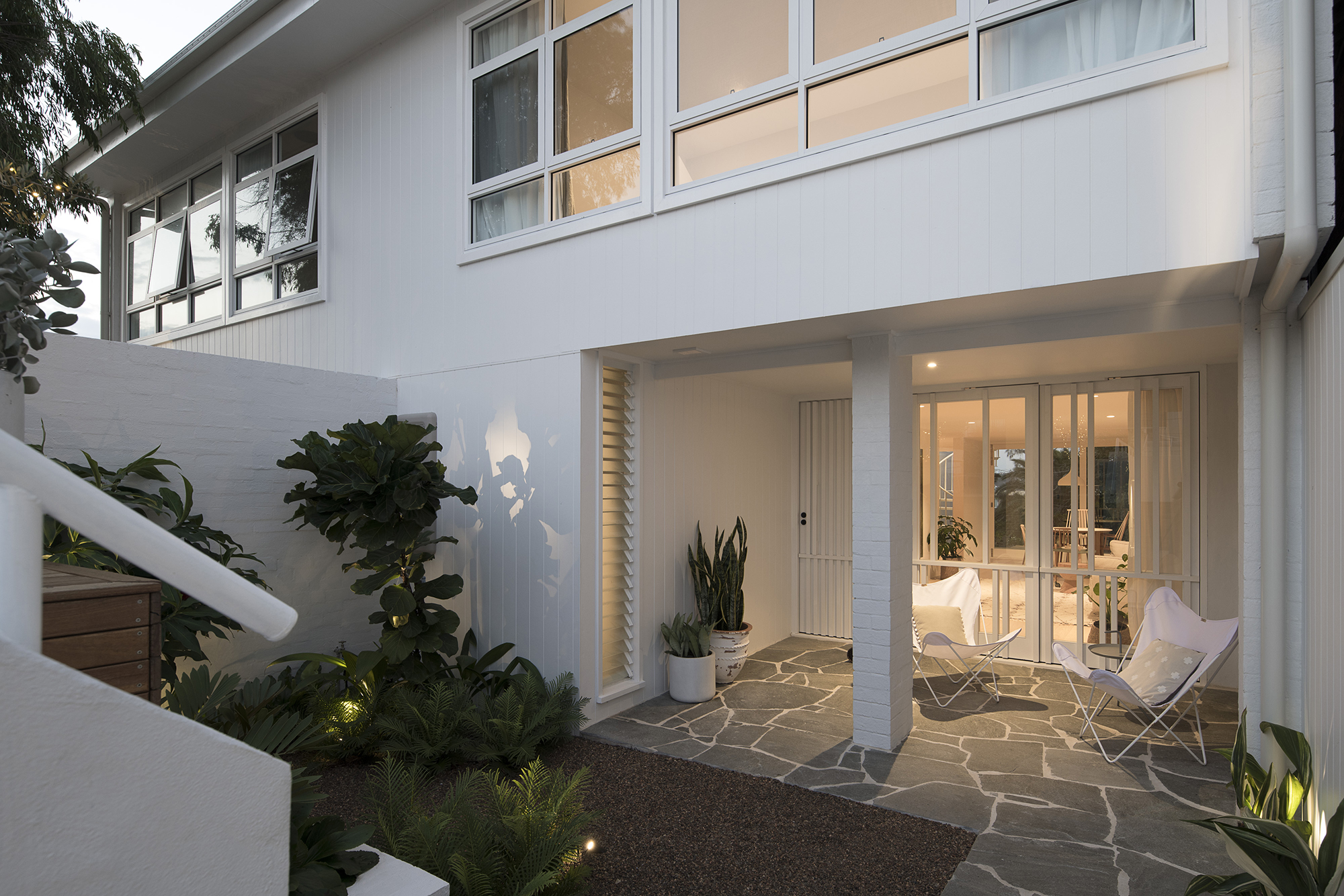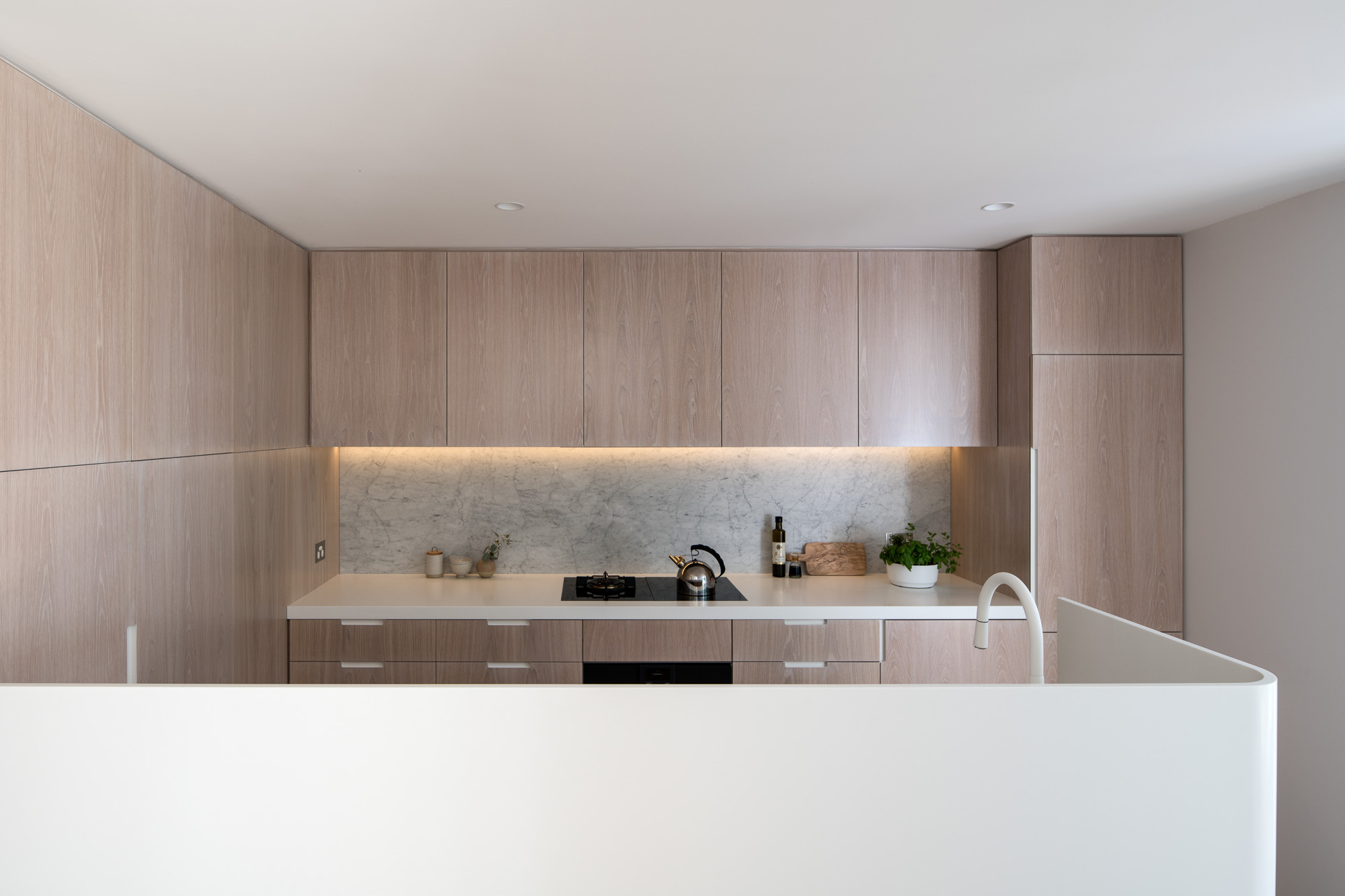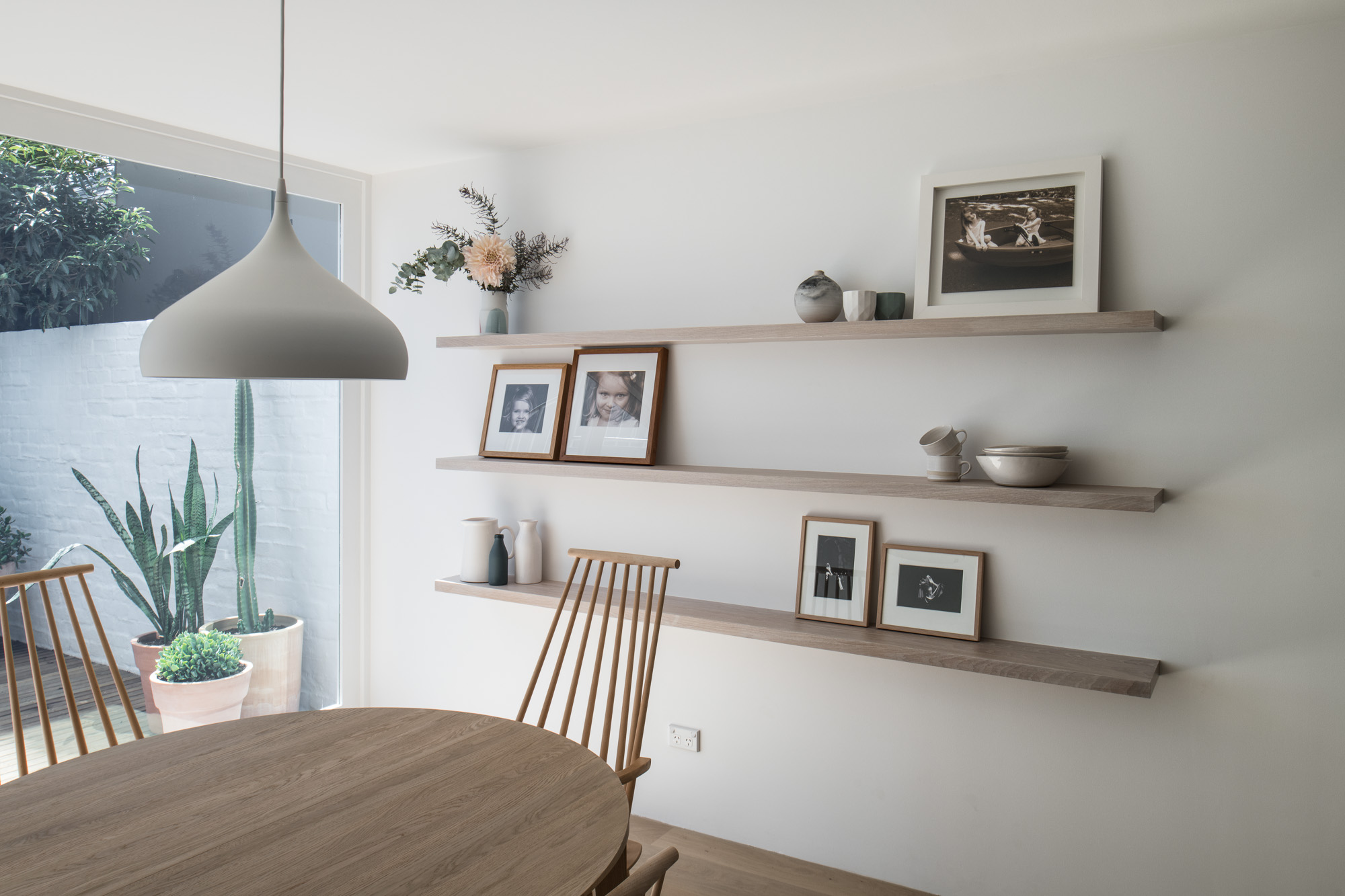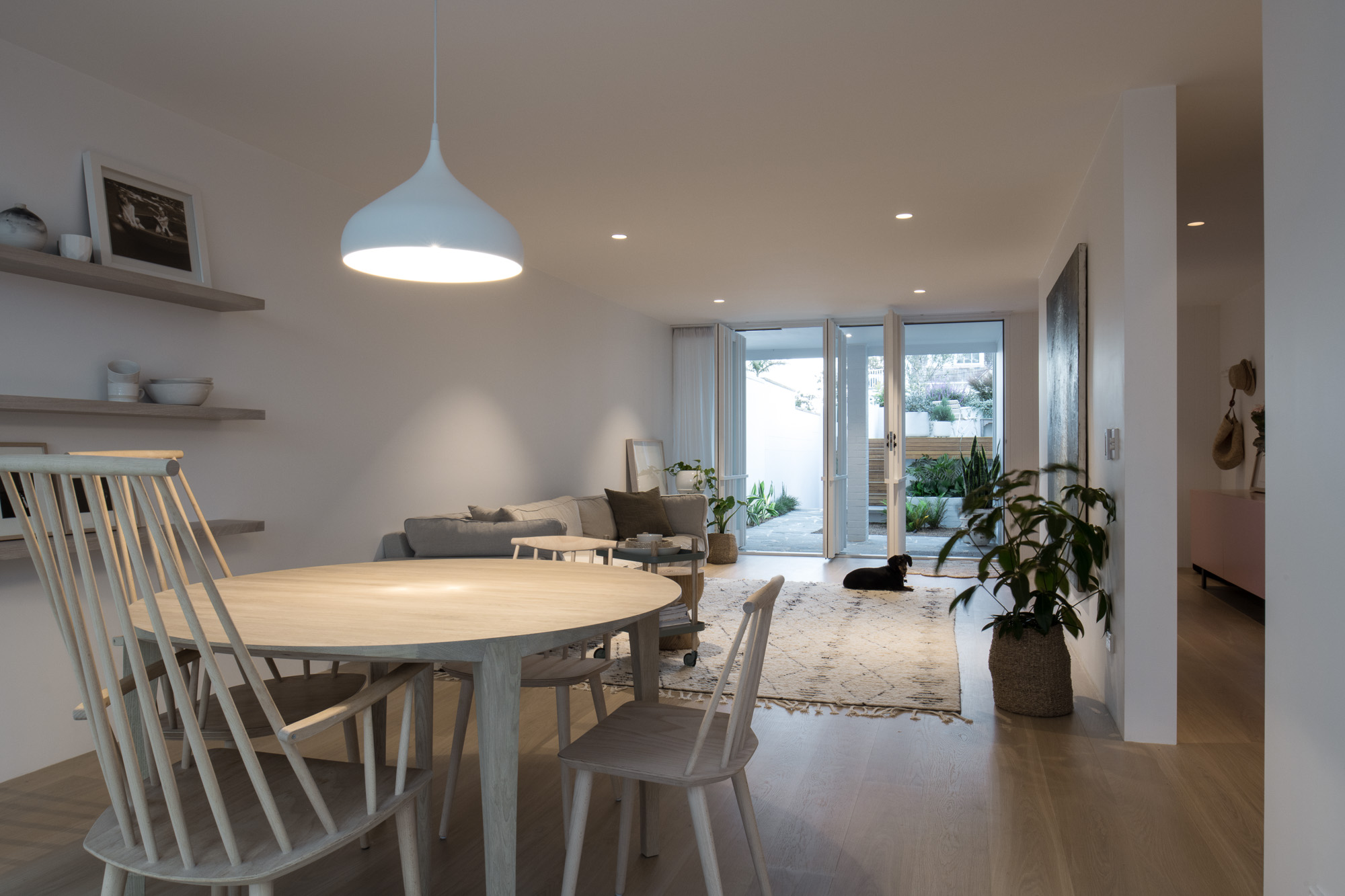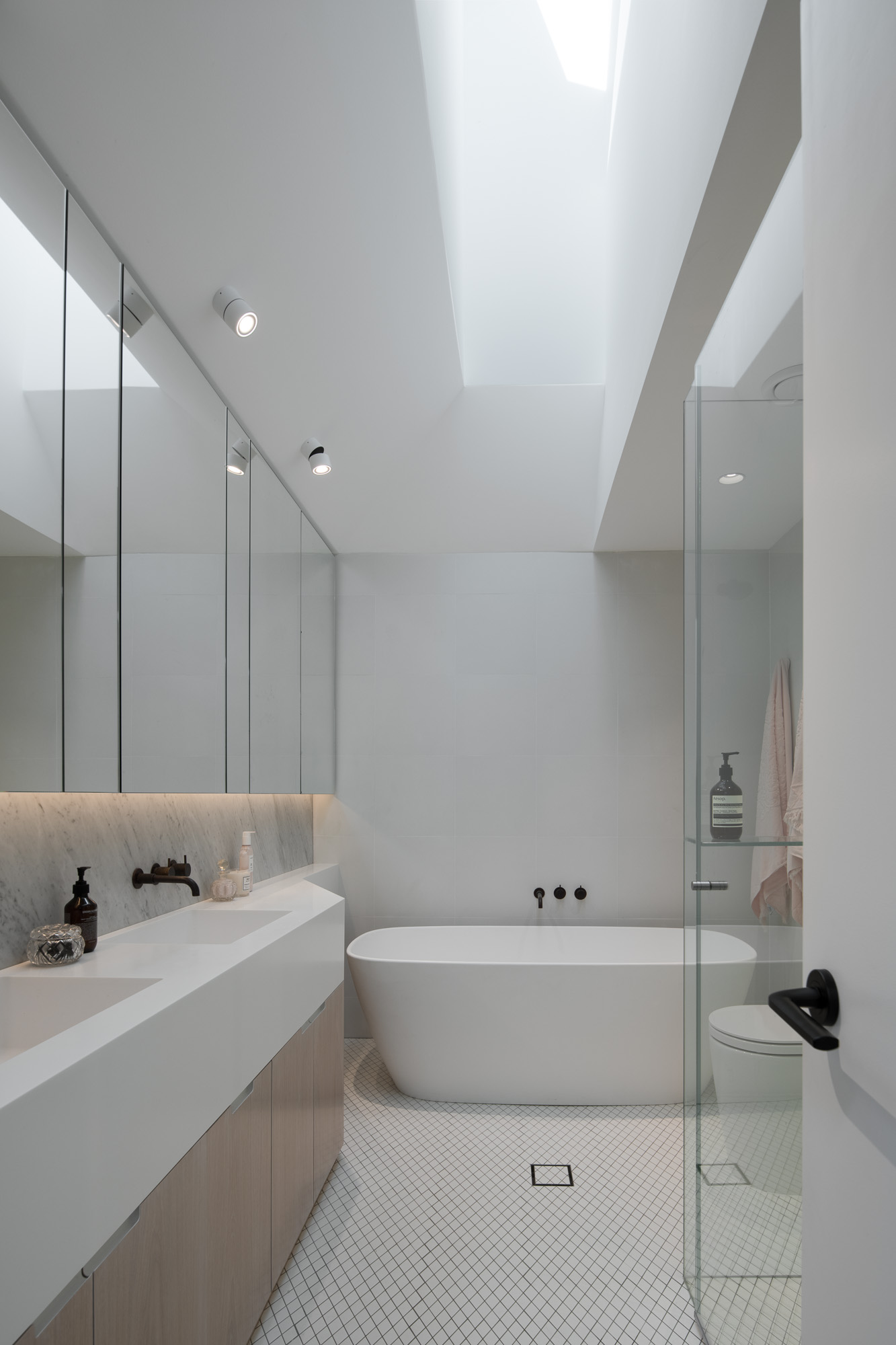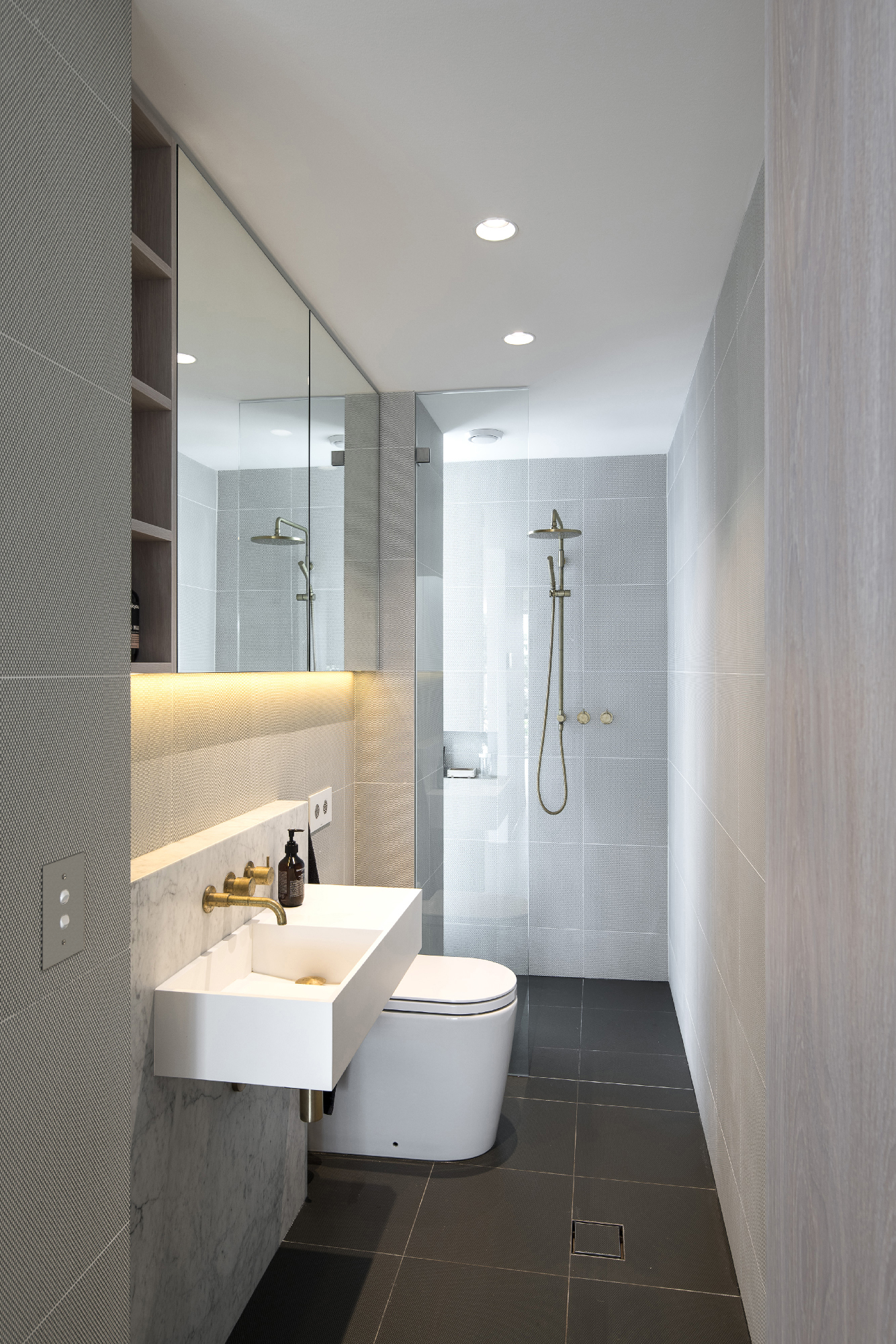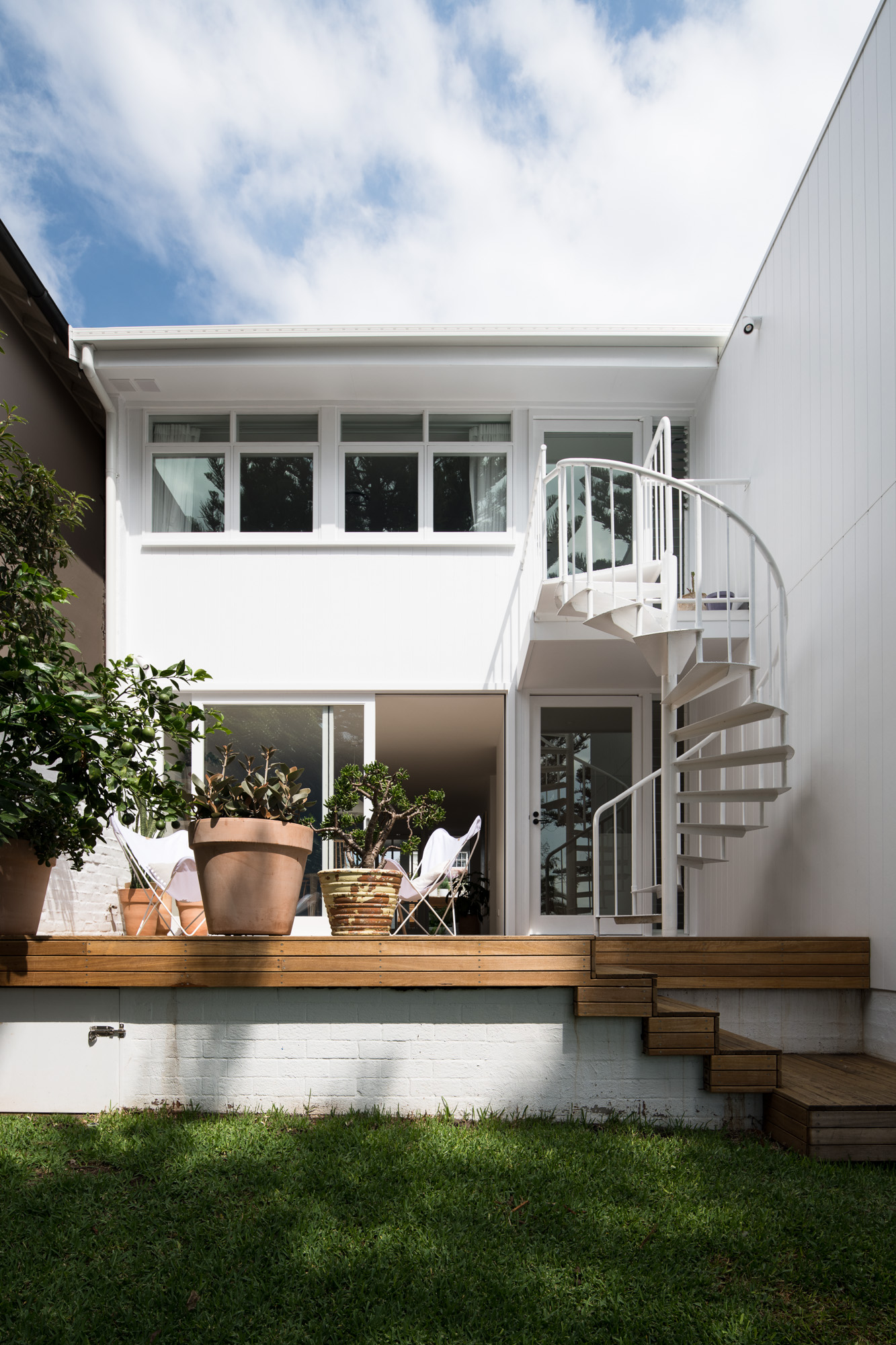Retention of the unsympathetic raised garage addition from the 1980’s was a risk to the success of the project, however creation of the roof top deck and courtyard landscape along with bagging existing brickwork and a white on white Mediterranean like palette helped to create the right beachside ambience turning this potential weakness into a strength.
Introducing the second dwelling into the original building envelope meant privacy – visual and acoustic was critical. The acoustic and fire separating wall jagging in and away through the building became a Rubik’s cube like planning exercise. The programmed uses on either side were carefully considered to reduce acoustic impacts. The in/out path of this separating wall provides a perception of greater width to each dwelling and staggering the rear setbacks provides excellent private outdoor living spaces.
The central void separating parent and children areas draws bright light to ground level effectively ventilating through a natural vortex with skylights open.
Landscape design forms a crucial extension to the living areas enhancing the casual beachside ambience. The bright whites and Scandinavian oak inside transitions seamlessly to an earthier palette where different ground plane treatments of crazy paving, timber decking and decorative pebbles define and influence different spaces. The lower front courtyard brings the qualities of a shaded protected garden to the living room and entry while maintaining a generous sense of space. A variety of planting with varying textures and subtle color variations of burgundy, silver, blue and muted greens mix to create an interesting garden outlook from within the house.
In the early design it was decided to retain as much of the existing building as possible. External walls, roof, floors and many internal walls were retained, the planning was carefully considered to work within existing room layouts where possible – despite the fact two entirely newly configured houses were being created. These decisions were made to contain costs and expedite the construction program. Heavy architectural interventions such as the introduction of complex steel or concrete features were avoided and there was a focus on renewal through introduction of high quality finishes and fixtures including claddings, linings, flooring and tiles.

